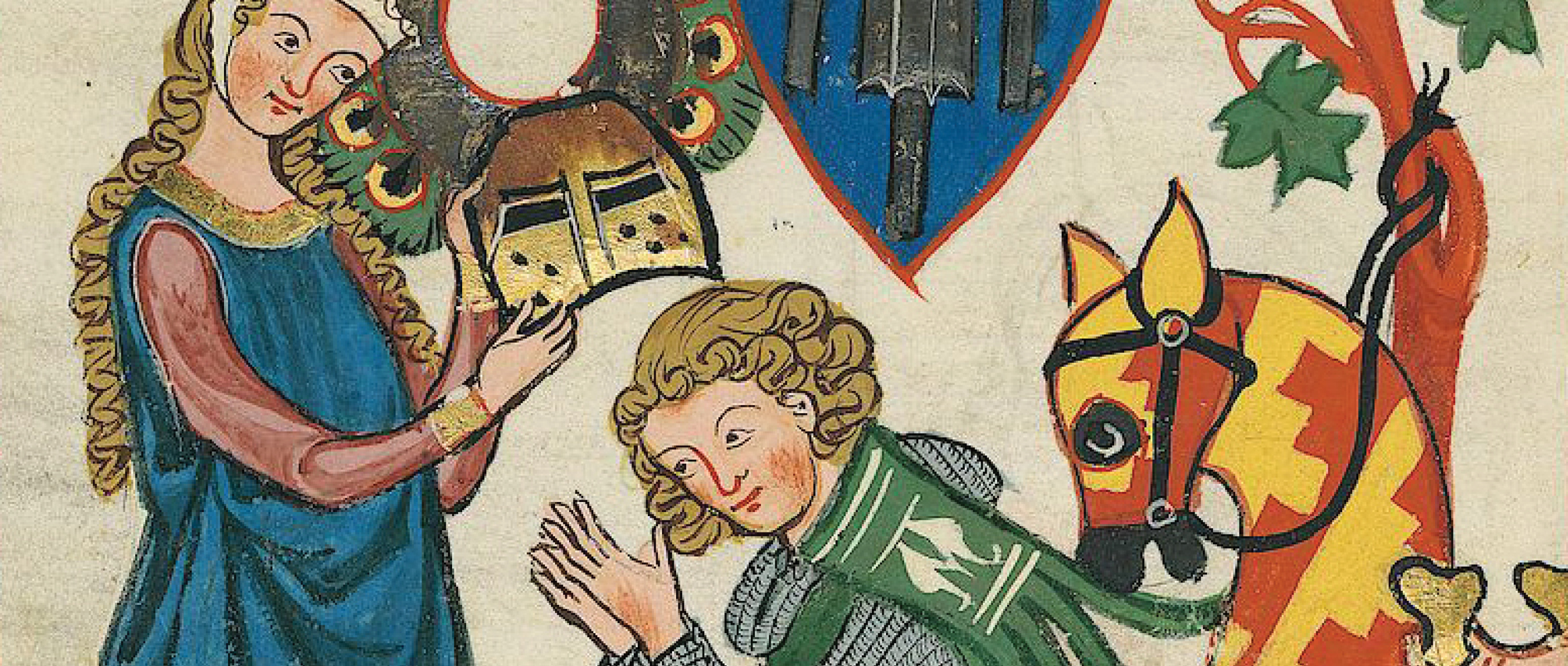Redefining Courtliness

Cod. Pal. germ. 208, f° 82v
Courtliness has been one of the most fundamental concepts in the study of medieval literature for almost 150 years. When he described “amour courtois” in 1883, Gaston Paris might not have imagined the perennial critical success that the term would have, as well as its lexical productivity, leading to cognate notions such as courtoisie/courtliness, courtly culture, courtly politics, grand chant courtois and, of course, courtly literature.
But what exactly is courtliness? Is it a social phenomenon? An aesthetic? An ideology? A way to regulate human relations within feudal courts? A narrative and poetic framework that organizes writing about adventures and love? A fantasy concocted by troubadours and trouvères, but never realized as such or, on the contrary, an authentic way of life that dominated the Occitan- and French-speaking courts of the 12th century and beyond?
New critical perspectives of recent decades have profoundly transformed the ways in which we might envisage courtliness. Gender studies and queer studies shed new light on courtly heteronormativity, while feminist approaches help us better understand the dialectics of emancipation and objectification that structure courtly writing. The global medieval perspective helps us better comprehend how courtliness anchors itself within a series of concentric geopolitical and geocultural circles that stretch from Al-Andalus to the Holy Land. Material philology and new codicology shed light on the networks of production and reception, located at the intersection of courts and cities, that allow the dissemination of courtly phenomena.
Required readings:
- Poésie des troubadours. Henri Gougaud (ed.)., René Laveau & René Nelli (trans.). Paris: Points, 2009
- Marie de France, Lais. Philippe Walter (trans.). Paris: Folio Gallimard, 2020
- Tristan et Iseut. Les Poèmes français, la saga norroise. Philippe Walter (trans.). Paris: Lettres gothiques, 1989
- Chrétien de Troyes, Le Chevalier de la charrette. Alfred Foulet & Karl Uitti (ed. & trans.). Paris: Classiques Garnier, 2020
- Heldris de Cornouaille, Silence: A Thirteenth-Century French Romance. Sarah Roche-Mahdi (ed. & trans.). East Lansing (Mich.): Michigan State University Press, 1999
- Guillaume de Lorris, Le Roman de la Rose. Jean Dufournet (ed. & trans.). Paris: GF Flammarion, 1999
NOTE: Item 5 (Heldris de Cornouaille, Silence) is available online through UBC Library.
Language of instruction: French